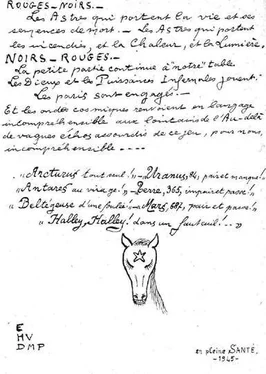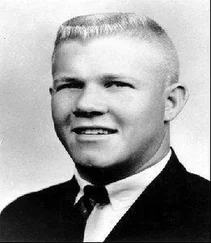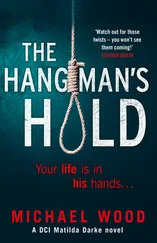The court was hearing another side to Dr. Marcel Petiot. At the same time, one fundamental question remained. Although many witnesses had testified to Petiot’s devotion as a doctor and his courage during his imprisonment by the Gestapo, had the defense been able to establish the crucial point—namely, that Petiot had served the French Resistance and killed only Germans and collaborators?
BY the standards of the previous two weeks, attendance at the Petiot trial was once again low on the fourteenth and fifteenth days. “We’re making a flop today” was how Petiot put it. The beautiful spring weather again offered many rival attractions, and the civil-suit attorneys, scheduled to present their cases, promised a great deal of repetition. On several occasions, Marcel Petiot would be seen and photographed sleeping in his box. One French newspaper summed it up as EVERYBODY SLEEPS AT THE PETIOT TRIAL.
Maître Archevêque outlined the Guschinow case, Véron the Dreyfus case; Maître Claude Perlès represented Madame Braunberger, Dominique Stéfanaggi the Joseph Piereschi estate, and Charles Henry the Grippay family. Very little new material emerged. Henry accused Petiot of working for a secret “anti-French terrorist organization” in close cooperation with the Germans—or, as he put it, a “Nazi faun that haunts the outskirts of the Gestapo.”
Henry was often singled out for illustrating the problems of lengthy repetitive speeches that day. In the middle of his talk, in which he had promised to “cast light on the entire case,” Petiot stood and said to much amusement: “I would like to remind the court that I am not paying for this lawyer’s services.” Henry spoke of everything in his closing statement, it seemed, except his client. At the end, Président Leser asked him “What about your client?”
“I am finished,” Henry said. “I do not insist on anything further.” Indeed, he had little to connect the disappearance of his client to the defendant, other than circumstantial evidence.
Andrée Dunant, the only female attorney in the trial, performed more effectively with her summary on behalf of the Rossmy family. Building on Petiot’s admission on the third day of the trial that he had killed Gisèle Rossmy, Adrien the Basque’s girlfriend, and reminding the jury of his reasoning, namely that “he did not know what else to do with her,” Dunant argued that the court had no other course of action than to declare the defendant guilty. She stuck to the essentials, avoiding the extended, tedious, and frequent digressions that dogged her colleagues.
Spectators in the gallery might have complained about the lack of drama in the last session of the trial, but they did not know what had happened earlier outside the courtroom. At ten thirty that morning, a red-haired woman wearing a houndstooth jacket had entered the bicycle repair shop of one of the jurors, André Molvault. The customer wanted to know if her bike was repaired; Molvault apologized for the delay, telling her that he was serving at the Petiot trial. “Ah!” she said. “There are going to be reprisals, you know, believe me.”
When Molvault asked if he should consider that a threat, the answer was yes, the woman said, storming out of the shop. In doing so, she had forgotten to take her bicycle and so Molvault was able to give a name to the police, who then traced it to a Dutch woman who lived in Lyon. Président Leser himself wrote an account of this incident and asked the police to pursue this case of juror intimidation.
On the fifteenth day, Wednesday, April 3, Maître Jacques Bernays summed up the civil case for the Wolff family. Maître Gachkel spoke for the Basches and Maître Léon-Lévy for the Knellers, both attorneys concentrating on showing that the victims simply could not have been collaborators or secret agents of the Gestapo. The defendant, Léon-Lévy said, united families—that is, by “uniting them in death.” The most effective speech of the day, however, came from Maître Pierre Véron, who spoke this time for the Dreyfus family.
“I have the good fortune to defend an excellent case against a man who is only an imposter,” Véron began, attacking Petiot’s claims to have been a Resistant. Based on the latter’s ignorance of basic facts and the many contradictions in his testimony, it was simply not possible that Petiot could have worked for the Resistance. A jury of eight-year-old children, Véron argued, could poke holes in his claims about his so-called secret weapon.
Véron provided one of the trial’s memorable moments when he compared Petiot to a popular legend of naufrageurs , or ship wreckers:
Cruel men set lanterns on the cliffs to attract sailors in distress and make them believe that it was a port or harbor. The confident sailors, unable to conceive of such black deeds, crashed onto the reefs, losing their lives and property. Those who deceived them, by pretending to save them, then enriched themselves with the spoils. Petiot is just that: the false rescuer, the false refuge
.
The members of the French Resistance had not died in combat, torture chambers, or the execution grounds so that Dr. Petiot could “wrap himself in the folds of their flag.”
Then, after reminding the jury of the fact that the Gestapo had released Petiot from prison, Véron pointed out that the Germans had certainly not been “very curious” about his activities. “I do not know if Petiot worked for the Gestapo or not,” he said, “but one thing is certain: the smoke rising from the chimney of rue Le Sueur went to join … the smoke from the crematoria of Auschwitz or Belsen.” Petiot was actually more hateful than the executioners at the Nazi death camps, Veron then argued, because he “dared to claim that he did this in the name of the Resistance.”
For his unspeakable crimes, the jury must, Véron concluded, “condemn him to death.” The court erupted in thunderous applause.
Amid the commotion, Petiot stood in his box shaking his fist and shouting insults at the attorney. Véron countered, as the applause died down, that he would attend his execution.
At this point, already well after five o’clock in the afternoon, Leser asked Dupin to begin the prosecution’s closing arguments. Clearly he would not have time to finish the summary that day, and the obvious question was how much would splitting his concluding statement rob it of its power. Dupin began in an old-fashioned flowery rhetorical style, claiming “the records of the Cour d’assises de la Seine, preserved for more than a century, are unable to provide an example of another trial as monstrous.” Petiot, looking down at his sketchpad, doodled and yawned.
“Yes, to find as many cadavers, to see as much blood, to witness as many killings one must go to the other side of the Rhine to the terrible charnel houses of Buchenwald or Auschwitz, where so many of our people have been systematically murdered by Nazi barbarians.” On trial that day, however, was not a German war criminal but a Frenchman. Petiot, still sketching, acted as if he was barely able to stay awake.
Dupin described Petiot as “remarkably intelligent and a wonderful actor, devoid of all scruples, deeply perverted and sadistic.” He covered his crimes by crafting his own personal “fictional romance of the Resistance.” But in a few minutes, Dupin said, “I will show you without difficulty that all of this is only a tissue of lies.” Petiot made a show of looking at the clock.
The prosecutor spoke for another two hours, blasting Petiot as “a murderer, a thief, a con man, and an impostor,” that is, anything but a Resistant. To accomplish what he claimed, Petiot would have required personnel, matériel, and constant vigilance. “It’s absurd,” he concluded. Dr. Petiot was simply a criminal dominated by the twin desires of greed and cruelty. He was the “modern Bluebeard,” that is, “a modern gangster” who “killed to rob.” Dupin would not be able to finish his speech that evening. Leser adjourned the court at seven o’clock. The prosecutor’s call for the death penalty would have to wait until the next day.
Читать дальше












